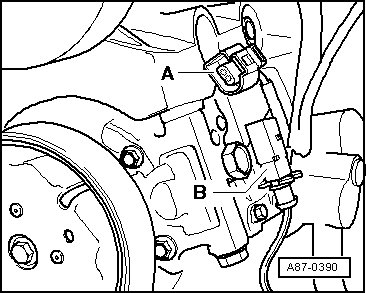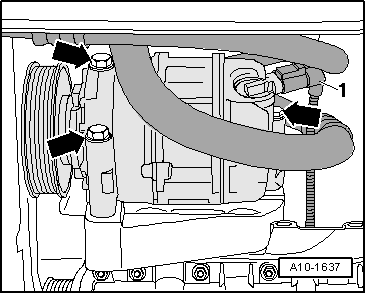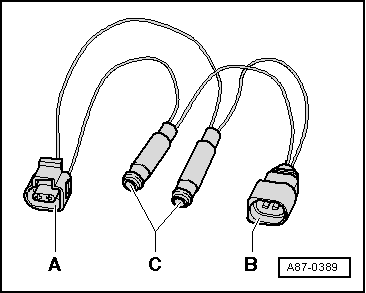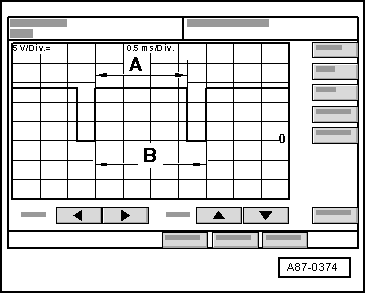| –
| Connect sensor head -VAS 5051/8- to adapter cables. |
| –
| Test lead (signal wire) to contact -2- of connector -A- |
| –
| Test lead (screen, earth) to contact -1- of connector -A- |
| –
| On the vehicle diagnostic, testing and information system -VAS 505X-, set Measurement mode: DSO (Digital Storage Oscilloscope) and select the setting 5V/div DC = 0.5 ms/div (5 V DC and 0.5 milliseconds per unit) |
| –
| On operating and display unit (Climatronic control unit -J255-), select „Lo“ temperature setting for driver's and front passenger's side (vehicles with automatic air conditioner). |
| –
| Turn rotary temperature setting control on air conditioner control panel (air conditioning system control unit -J301-) anti-clockwise as far as „cold“ stop (vehicles with manually controlled air conditioner). |
| –
| On the operating and display unit (Climatronic control unit -J255-), press the buttons AUTO and ON/OFF / ECON or AC to activate/deactivate the air conditioner compressor regulating valve -N280- (on vehicles with automatic air conditioner). |

Note | Depending on the version of the operating and display unit, the operating mode „ECON“ is active when, on the version with an ECON button, the indicator lamp in the button is illuminated, and on the version with an AC button, the indicator lamp is not illuminated. |
| –
| On the air conditioner controls (air conditioning system control unit -J301-), press the button AC to activate and deactivate actuation of the air conditioner compressor regulating valve -N280- (vehicles with manually controlled air conditioner). |
| Depending on the setting of the operating and display unit (Climatronic control unit -J255-), the display of the oscilloscope will show: |
| –
| In „OFF“ or „ECON“ mode („AC off“): No square-wave signal (regulating valve is not activated) |
|
|

|
 Note
Note
 Note
Note

 Note
Note
 Note
Note
 Note
Note
 Note
Note
 Note
Note

 Note
Note
 Note
Note
 Note
Note